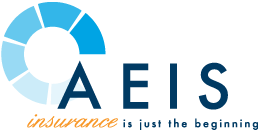A Guide to Lowering Health Plan Costs Using Section 105
Choosing the right health insurance for your organization’s employees is no easy task. If you’re a small business, you’ve likely considered the viability of leveraging a Section 105 Plan. Read on to learn the basics of Section 105 Plans for employers.
What is a Section 105 Plan?
Section 105 Plans are also commonly referred to as Health Reimbursement Arrangements, or HRAs. The plan gets its name from its origin in the allowance of tax-free reimbursement of medical and insurance expenses under Section 105 of the Internal Revenue Code. A Section 105 Plan is regulated by the IRS. Many small to mid-sized businesses are drawn to Section 105 Plans for premium cost savings.
It’s important to know that a Section 105 plan is not the only type of HRA, however. There are several different types of HRAs, and some work distinctly differently from the HRA “wrap strategy” we will discuss later on in this blog post. Section 105 plans are separate from Individual Coverage HRAs (ICHRAs), Excepted Benefit HRAs, or premium-only reimbursement arrangements.
Section 105 plans / HRAs are a type of self-insured health plan that can be either used alone or coupled with a fully insured health plan. When coupled with a fully-insured plan, the Section 105 plan can be used as a partial self-funding strategy in order to lower fixed premium costs, while still mitigating risk from catastrophic health claims.
How Does a Section 105 Plan Work for Employers?
A Section 105 plan / HRA is not health insurance in and of itself, rather, you can think of it as a vehicle for employers to reimburse their employees for their medical expenses. However, as described above, Section 105 plans can be used in conjunction with the “regular” health insurance plan your company may already be offering.
Employers tend to pair or “wrap” Section 1-5 plans/HRAs with a low cost fully insured health plan such as a high deductible health plan (HDHP), consumer directed health plan (CDHP), or a “bronze plan.” “Bronze” plans, for example, usually have the lowest monthly premiums, but the highest costs for medical care.
These types of fully insured plans can be a great option for individuals who don’t use many medical services but need protection in case of an unexpected event. However, deductibles with these plans are typically very high. These types of plans are commonly coupled with Section 105 plans, as Section 105 plans can serve to reimburse the employee medical expenses where the Bronze plans don’t offer first dollar coverage.
When it is set up well, the effect of pairing a bronze plan, HDHP, or CDHP with a Section 105 plan is the reduction of employees’ deductibles and out-of-pocket costs, while employers can save significantly if the all the covered employees have little to no costly medical claims. Essentially, an HRA / Section 105 plan is a way for employers to turn a Bronze plan into a Gold or Platinum plan, in a manner of speaking, because from the employees’ perspective, the Section 105 plan makes the Bronze plan much more comprehensive.
How Does Reimbursement Work Under a Section 105 Plan?
In order to establish a Section 105 plan, the employer must create a formal, written plan and decide on a periodic allowance amount for employees. Employees submit expenses, which are reviewed for eligibility. If the expense qualifies, it will be reimbursed by the employer from their Section 105 plan fund. Legally, the fund must not be made up of employee deductions. The interesting advantage of this for employers is that the reimbursement they make to employees is 100% tax-free (up to the previously set allowance cap).
What are the Pros of Section 105 Plans?
- You can leverage a third party to administer Section 105 / HRA reimbursements. Doing so outsources the administrative burden of reimbursing employees’ expenses; and, perhaps more importantly, it insulates the employer from having to review and process HIPAA sensitive health information of their employees, since the third party administers the reimbursements.
- Pairing a Section 105 plan with a fully insured health plan can be more affordable for employees. Section 105 plans / HRAs carry lower premiums than fully insured plans, due in large part to the fact that they are not subject to health insurance tax. Reimbursements received by employees can be excluded from their gross income.
What are the Cons of Section 105 Plans?
- Navigating a new benefit administration model: If you’re not already offering a Section 105 plan / HRA, there may be growing pains involved in kickstarting the process. The workaround, of course, is finding a great third-party administrator.
- You’ll have new compliance considerations: Section 105 Plans / HRAs are regulated by the IRS, and are subject to regulations under ERISA, HIPAA, and ACA Market Reforms, among others. Again, this is a “con” that can be easily regulated with assistance from the right team of experts.
Choosing the Right Health Plan for Your Organization
After learning about Section 105 Plans, you’ll want to weigh the pros and cons of this type of health plan for your organization. It always helps to talk to an expert, and AEIS is here to help. AEIS is a strategist, advocate, and advisor for businesses looking to select, optimize, and maintain the perfect employee benefits package. Contact AEIS today.
We're here to help.
Schedule a free phone consultation today.
Latest Insights
Advanced Estate & Insurance Services, Inc. CA License #0M90887
Duda Website Design & SEO by RivalMind



